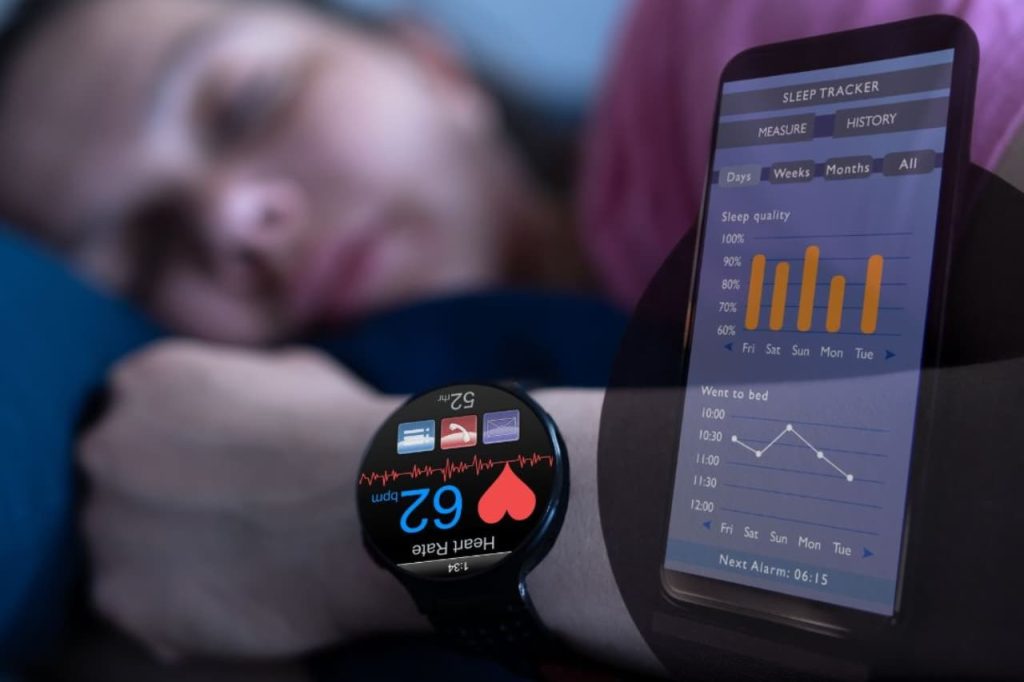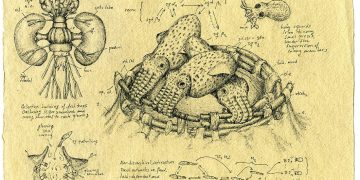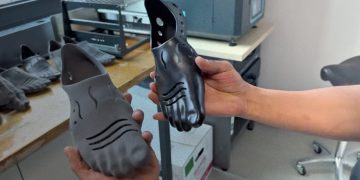Introduction
The fusion of wellness and technology is transforming how we approach health and fitness. In an age where convenience and connectivity are paramount, smart devices have emerged as powerful tools for monitoring and improving our well-being. From wearables that track physical activity to smart scales that measure body composition, these technologies are revolutionizing the way we manage and maintain our health. As consumers increasingly seek personalized solutions, the role of these devices in achieving healthier lifestyles is becoming more significant. This article will explore how smart health devices, such as fitness trackers, sleep monitors, and smart scales, are reshaping personal wellness, improving overall health outcomes, and empowering individuals to take control of their well-being.
1. The Rise of Smart Health Devices
1.1 The Growing Popularity of Wearables
Wearable technology has become one of the most widely used forms of smart health devices. From fitness trackers like Fitbit to advanced smartwatches like the Apple Watch, wearables offer users a seamless way to monitor daily activity, heart rate, sleep patterns, and more. These devices connect to apps that allow consumers to track trends over time, providing valuable insights into their health and fitness.
Wearables often feature sensors that collect data on physical activity, such as steps taken, calories burned, and even more complex metrics like VO2 max or ECG readings. This allows consumers to track progress toward fitness goals, receive feedback on their health, and adjust their routines as needed. With real-time data, wearables enable users to make immediate decisions about their lifestyle, such as increasing physical activity, improving sleep hygiene, or adjusting their diet.
1.2 Integrating Data for Personalized Health
One of the most significant advantages of smart health devices is their ability to integrate data and offer personalized recommendations. For example, wearables can sync with fitness and nutrition apps, creating a comprehensive health profile that helps users understand how their physical activity, sleep patterns, and nutrition interact.
Through machine learning and AI-driven algorithms, these devices provide individualized insights that guide users toward healthier choices. For example, a wearable might suggest changes to an exercise routine based on a user’s stress levels, sleep quality, or heart rate variability, creating a customized health journey.
2. Sleep Monitoring: Improving Rest for Better Health
2.1 The Importance of Sleep in Wellness
Sleep plays a critical role in overall wellness, yet many individuals overlook the importance of good sleep hygiene. Lack of quality sleep has been linked to various health issues, including heart disease, diabetes, and mental health disorders. Recognizing the importance of sleep, many smart health devices now include sleep tracking features to help users monitor their sleep quality and establish healthier sleep patterns.
Smart devices, such as the Oura Ring and Fitbit, track sleep stages—light, deep, and REM sleep—giving users detailed insights into their nightly rest. By monitoring these metrics, consumers can identify patterns or disruptions in their sleep, which may indicate underlying health concerns such as sleep apnea, insomnia, or excessive stress.
2.2 How Smart Devices Enhance Sleep Quality
Smart devices go beyond simple tracking by offering actionable insights and suggestions. For example, some wearables and apps can recommend the optimal time for going to bed based on circadian rhythms or suggest relaxation techniques, such as guided breathing exercises, to improve sleep onset.
Some devices can even adjust the sleep environment for optimal rest. For instance, smart thermostats like Nest can automatically adjust the room temperature for ideal sleep conditions, while smart lighting systems can dim the lights at a scheduled time to help users wind down before bed. Additionally, sleep trackers can connect with other devices, such as smart pillows, which adjust firmness and temperature for a more comfortable sleep.
2.3 Addressing Sleep Disorders with Technology
For individuals struggling with sleep disorders, smart health devices can provide valuable support in diagnosis and treatment. Devices like the Withings Sleep Analyzer can detect signs of sleep apnea, while others track movement and breathing patterns throughout the night. By identifying early symptoms of conditions like insomnia or sleep apnea, these devices help users seek professional treatment sooner.
Moreover, some devices are integrated with health apps that allow users to share their data with healthcare providers, giving doctors a better understanding of their patients’ sleep habits and helping them to develop more targeted treatment plans.

3. Smart Scales and Body Composition: A Holistic Approach to Health
3.1 Beyond Weight: Tracking Body Composition
Smart scales have become a popular tool for individuals looking to monitor their overall health and fitness. Unlike traditional scales that only measure weight, smart scales measure a range of body metrics, such as body fat percentage, muscle mass, bone density, and water weight. Devices like the Fitbit Aria, Withings Body+, and Garmin Index provide users with a more comprehensive view of their body composition.
Tracking body composition is important because it provides insights into overall health beyond just weight. For example, someone may lose weight but still have a high percentage of body fat, which can be a sign of unhealthy fat loss. By using smart scales to measure muscle mass and fat percentage, users gain a better understanding of their physical progress and can adjust their fitness and nutrition strategies accordingly.
3.2 Achieving Fitness Goals with Smart Scales
Smart scales allow users to set specific health and fitness goals, providing motivation and helping them track their progress. Many of these scales connect to companion apps that store historical data, enabling users to track changes in their body composition over time.
For example, users can set goals for reducing body fat, increasing muscle mass, or improving hydration levels. These devices offer feedback on whether users are on track to meet their goals, providing positive reinforcement or suggesting adjustments to help them reach their targets.
3.3 Integration with Fitness and Nutrition Apps
What makes smart scales even more powerful is their ability to sync with fitness and nutrition apps. For example, a user who tracks their daily exercise with a wearable can combine this data with their smart scale’s body composition metrics to get a holistic view of their health. Many fitness and nutrition apps allow users to log food intake, track exercise routines, and monitor weight changes, which are then reflected in the scale’s data.
This seamless integration creates a centralized health management system that gives users all the information they need to make informed decisions about their health. By bringing together data from different sources—wearables, smart scales, nutrition apps—users can understand how different lifestyle factors interact and impact their overall wellness.
4. Fitness and Activity Trackers: Encouraging Movement and Healthy Habits
4.1 Real-Time Monitoring of Physical Activity
Fitness trackers like the Fitbit Charge, Garmin Vivosmart, and Apple Watch are designed to monitor physical activity in real time, providing valuable feedback on users’ movement throughout the day. These devices track metrics such as steps taken, calories burned, distance traveled, and active minutes, helping users stay on track with their fitness goals.
Smart fitness trackers also encourage users to stay active by sending reminders to move if they’ve been sedentary for too long. Some devices provide personalized recommendations based on activity patterns, such as suggesting that a user take a brisk walk after a sedentary period or perform a stretching routine to improve flexibility.
4.2 Tracking Fitness Goals and Progress
Beyond activity tracking, fitness trackers are essential tools for setting and tracking fitness goals. These devices offer insights into long-term trends, helping users track improvements in areas like cardiovascular fitness, stamina, and strength. Advanced models even monitor heart rate variability (HRV), a key indicator of recovery and overall fitness.
For example, users can set goals for steps per day, calories burned, or weekly exercise minutes, and the device will provide real-time progress reports, motivation, and reminders. Some trackers also provide rewards or badges for reaching milestones, gamifying the fitness journey to encourage continued engagement.
4.3 Social Features and Motivation
Many fitness trackers now include social features, allowing users to connect with friends or participate in challenges to stay motivated. This social aspect helps create a community around fitness, encouraging friendly competition and accountability. Whether it’s a step challenge or a fitness class, users can share progress, celebrate victories, and inspire one another.
5. Conclusion: Empowering Health with Technology
In conclusion, smart health devices are revolutionizing how individuals approach wellness by providing real-time data, actionable insights, and personalized recommendations. Whether through wearables that track physical activity, smart scales that measure body composition, or sleep monitors that help improve rest, technology is making it easier for consumers to maintain healthier lifestyles.
As technology continues to advance, the potential for innovation in the wellness space is limitless. By integrating AI, machine learning, and data analytics, smart health devices will become even more effective at helping users optimize their health. The future of wellness is connected, and with these technologies, individuals can take charge of their health and enjoy the benefits of a more active, balanced, and well-monitored life.


















































Discussion about this post